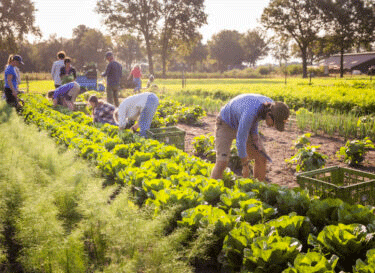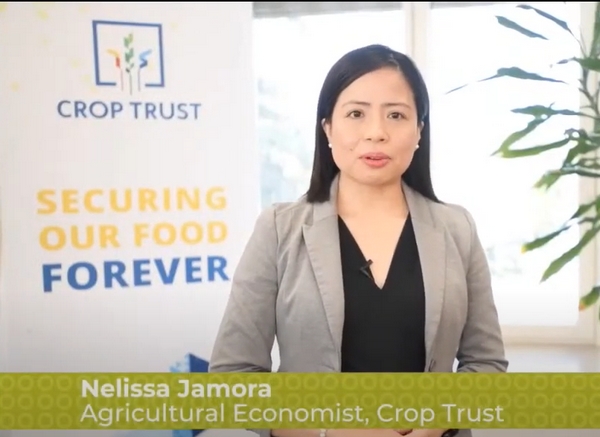The agricultural sector is undergoing a significant transformation as farmers and innovators seek new ways to adapt to environmental challenges and the growing demand for food. While many struggle to implement sustainable practices, a few entrepreneurs are leading the way, demonstrating that alternative farming methods can not only succeed but thrive. From vertical farms to biobased building materials, these innovators are proving that change is possible and necessary.
Vertical Farming: A Sustainable Solution for the Future
Traditionally, crops have been grown on expansive horizontal fields, but vertical farming is changing the landscape of agriculture. By growing crops in stacked layers, vertical farming drastically reduces the land needed for cultivation. This is particularly important as the world’s population continues to grow, putting pressure on agricultural land, and climate change makes certain areas less viable for traditional farming.
Infinite Acres, a Dutch-American company, is a leader in vertical farming technology, providing the systems that support vertical farms worldwide. By using hydroponic systems, vertical farms like those operated by Infinite Acres require significantly less water and land than conventional farms, while still yielding high quantities of crops. This method is especially important in regions facing extreme weather patterns and water scarcity, making it a viable alternative for farmers looking to future-proof their operations.
Seaweed Farming: A Sustainable Crop in the Wind
In Scheveningen, Netherlands, a unique form of aquaculture is taking place. De North Sea Farm #1, the world’s first seaweed farm located within a wind turbine park, is showing how seaweed can be cultivated sustainably offshore. Managed by North Sea Farmers, this seaweed farm is part of an effort to integrate farming with renewable energy production. Seaweed is a versatile and sustainable crop with the potential to help reduce ocean acidification, absorb CO2, and provide a renewable source of biofuel and food.
Seaweed farming in wind farms represents a promising synergy between renewable energy and sustainable food production. By utilizing the space between turbines, this innovative approach also reduces the environmental footprint of both energy and food production systems, paving the way for other coastal regions to adopt similar models.
Citizen Movements: Herenboeren and the Future of Local Farming
In the Netherlands, the Herenboeren movement is revolutionizing how food is grown and consumed. This citizen-led initiative brings communities together to build and manage local farms, fostering direct connections between consumers and producers. With over 22 farms and 9,000 members, Herenboeren is showing how collective ownership can promote sustainability in food production and strengthen the link between people and their food sources.
Founder Geert van der Veer emphasizes that this movement goes beyond farming techniques. It’s about restoring a deeper relationship with nature, understanding where food comes from, and making sustainable food choices. As traditional farmers face challenges such as an aging workforce and environmental regulations, Herenboeren offers an alternative that could help address the gaps in the agricultural system.
Food Forests: Biodiversity and Local Food Production
In Geldermalsen, the Netherlands, an agricultural food forest is offering an innovative way to combine food production with biodiversity conservation. Food forests, which are designed to mimic natural ecosystems, grow a variety of edible plants, trees, and shrubs that improve soil health and foster biodiversity. These forests not only provide food but also offer ecological benefits, such as carbon sequestration and habitat for wildlife.
Medeoprichter Gerdien Dijkstra of the Geldermalsen food forest highlights how these farms also serve social functions. Visitors can pick their own food, participate in educational tours, and learn about sustainable farming practices. This concept offers a practical way to combine food security with environmental stewardship while fostering a connection between people and the land.
From Dairy Farming to Gastronomy: A New Business Model
Lianne van Genugten’s farm, now called “Vaderland,” was once a traditional dairy farm but has transformed into a gastronomic estate. This farm grows a variety of vegetables and herbs, which are used to create seasonal dishes at an on-site restaurant. By embracing the rhythms of nature and working with what the land provides, Vaderland showcases how creative solutions can turn farming into a sustainable and profitable business model.
Van Genugten’s story is a testament to how farmers can adapt to changing market conditions by diversifying their business and embracing seasonality. The farm produces food for direct consumption while also serving as an educational hub for sustainability.
Biobased Building Materials: Turning Crops into Construction
Finally, the concept of growing crops for the production of biobased building materials is gaining traction. By replacing conventional building materials like steel, concrete, and brick with natural fibers like hemp and straw, the construction industry can significantly reduce its carbon footprint. In the Netherlands, farmers like Arjen van Buuren are growing hemp for use in eco-friendly building materials, such as insulation and structural components.
This approach not only offers farmers new revenue streams but also supports the construction industry’s transition to more sustainable practices. Biobased building materials are gaining momentum as part of a broader trend toward reducing the environmental impact of construction.
These success stories highlight the incredible potential of innovative farming practices in shaping the future of agriculture. From vertical farming and seaweed cultivation to local citizen-led farms and biobased construction materials, these entrepreneurs are proving that sustainable farming practices are not just possible—they are already happening. As the world continues to face environmental challenges, these examples offer a glimpse of the agricultural future that is both resilient and environmentally responsible.










